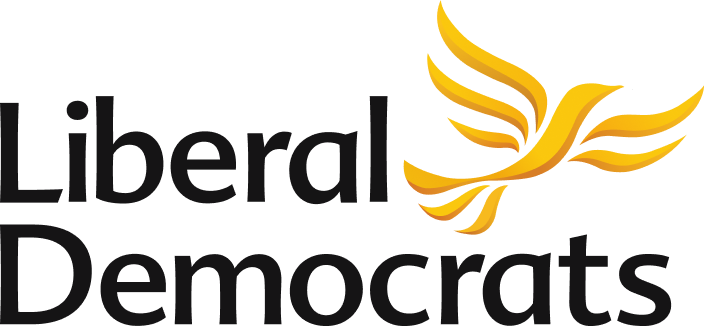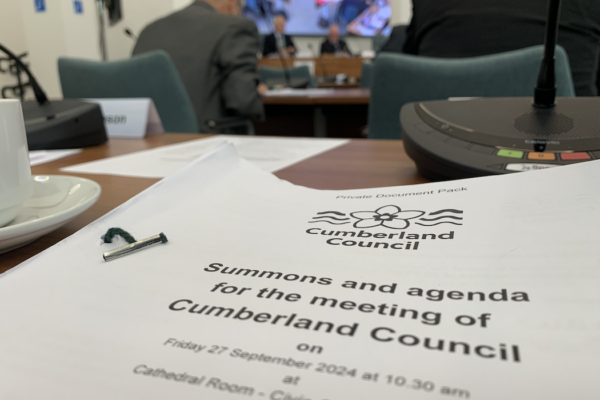
Answers to Questions 5 November 2024
At the last full council meeting of Cumberland Council myself and my Liberal Democrat Group colleagues asked the following questions to the Cabinet. Here they are with the responses from the appropriate cabinet member.

Councillor Pickstone submitted the following question to the Portfolio Holder for Sustainable, Resilient and Connected Places
Has the Portfolio Holder for Sustainable, Resilient and Connected Places seen recent research undertaken by the BBC and others, which show that waste to energy is now the most polluting way of producing electricity in the UK. It produces an average carbon dioxide equivalent emission produced per kilowatt-hour (gCO2e/kWh) of 710, compared to 11 for wind power, and do they share my view that this should not be seen as the future solution for waste disposal?’
Answer:
The article published by the BBC on 15th October 2024 followed the earlier news that the last UK based coal fired power station ceased production on 30th September 2024 (Moment UK’s last coal-fired power station shuts down – BBC News). The BBC analysis was focussing on the greenhouse gases per unit of energy generated and when compared to other methods of power generation such as solar and wind is significantly greater. However, our opinion is that the article stopped short of meaningful content when looking to Energy for Waste (EfW) Incineration as a solution to treating household residual (non-recyclable) waste. The current abundance of EfW capacity in mainland UK is due to ensuring capacity was available to Waste Disposal Authorities (WDA) to meet landfill diversion requirements. The Waste hierarchy puts Recovery above Responsible Disposal (Landfill) and as such, WDA’s must consider EfW as a viable method of treatment of residual waste over landfill. Furthermore, in some cases, WDA’s are directed to EfW as the mandatory solution to treat waste containing Persistent Organic Pollutants(POP’s) which are prevalent in domestic seating and must be collected separately at many of our Household Waste Recycling Centres. Many bodies including LARAC and NAWDO that Cumberland Council hold membership have responded to this article.
Over the next 2-5 years, various legislative changes will be implemented which will seek to drive some of the fossil based waste (such as plastics) out of the residual waste stream. The Council will continue to provide credible recycling options for our residents to meet or better the forthcoming legislation changes to help ensure that our residents are not inconvenienced by choosing to recycle.
The current method of treatment of the household residual waste in Cumberland is via the Mechanical and Biological Treatment (MBT) facilities at Hespin Wood, Carlisle and Sowerby Woods, Barrow. These MBT’s are operated and maintained by Biffa under a 25 year PPP Contract which expires in June 2034. This means that in less than 10 years, the Council will have to be ready to enter a new era and all known proven technologies for waste treatment will be investigated to determine how best to meet our residents waste and recycling needs. It is therefore not possible at this stage to say that EfW is not to be seen as a future solution for waste disposal.
Councillor Pickstone submitted the following question to the Portfolio Holder for Financial Planning and Assets – ‘Could the Portfolio Holder for Financial Planning and Assets inform members what are the most significant areas of savings in the Transformation Plan that are rated as ‘red’ and whether these are now considered as unachievable?’
Answer
As Councillors will know – Cumberland Council inherited a challenging financial position in April 2023. This was due to significant reductions in government funding to the 4 legacy councils over the last decade. And compounded by increased demand in Children’s services and adult social care.
We have made huge strides in addressing that position. Demonstrated by the vastly improved outturn position in 23/24 as against the Q1 prediction of that financial year.
We have done that in 3 ways:
Sound financial management and reporting, a focus on non-essential spend including a partial recruitment freeze and the development of a comprehensive transformation programme.
It is important to be clear that the transformation programme as well as delivering financial sustainability will also improve services and outcomes for our residents.
As with all transformation plans, we closely monitor delivery and adapt timelines in line with changing circumstances and emerging opportunities.
This has allowed us to develop robust financial planning assumptions including profiling savings that are expected to be achieved.
The entirety of our Transformation Programme has been reviewed as part of the Medium-Term financial plan (MTFP) refresh.
In 2024/25 there are approved transformation savings of £37m planned – and the risk review has identified that:
- £0.5m rated as red – higher risk (1.35%)
- circa £7.1m will not be delivered in year (20%)
- Of that £7.1m, £4.5m is being reprofiled into later years as we believe the transformation plan is valid however further time is needed to realise it
Which means that we have 7% of our initial transformation plan as unachievable and we are working hard to identity alternatives.
Which given the scale and complexity of the programme is an excellent achievement.
We will of course be undertaking the same exercise for 25/26 and all subsequent years.
Councillor Dobson submitted the following question to the Portfolio Holder for Sustainable, Resilient and Connected Places – ‘Constructing the new Southern Link Road, stretching 8 kilometres, may not initially seem daunting, but with two river crossings, two railway crossings, and connections to existing roads, it proves to be a remarkable civil engineering feat. As structures take shape and new technologies and materials are employed, the project is indeed impressive.
Answer:
However, the impact on residents cannot be ignored. Many face inconveniences from road closures, noise, dust, and mud. Commuters and shops in Dalston suffer from the prolonged closure of the B5299 Barras Lane, which links Dalston to the city, and on the C1014 Newbiggin Road between Dalston and M6 junction 42 a 30mph speed limit has been introduced.
Could the Portfolio Holder for Sustainable, Resilient and Connected Places provide assurance that the B5299 will reopen before Christmas? Additionally, will you urge the Highways team to work with Cumbria Constabulary to address the behaviour of drivers who ignore the speed limit on Newbiggin Road?
The Civil Engineering is indeed a remarkable engineering feat and the project continues to make good progress despite the weather. The Project team are extremely aware of the impact on residents and making every effort to reduce any noise and dust and mud being generated. It is inevitable that some roads will need to be closed for periods of time whilst the diversion of services are undertaken and construction progresses. The B5299 is currently scheduled to be reopened on 20th December 2024 ahead of the Christmas break under single file traffic control. Construction activities will recommence 06th January 2025 and the single file traffic control will stay in place until these works are completed by the end of January 2025.
Cllr Chris Wills submitted the following question to the Portfolio Holder for Lifelong Learning and Development – ‘Could the Portfolio Holder for Lifelong Learning and Development tell us: –
- how far our pupil numbers are projected to fall over the next 4 years?
Answer part 1:
The table below shows the calculated number of Reception places forecast to be required in Cumberland in the coming years.
| Year of reception intake | 2025 | 2026 | 2027 | 2028 | |
| Forecasted reception places required | 2665 | 2649 | 2546 | 2523 | |
- and the subsequent number of surplus primary school places it will leave?
We currently have a total of 3525 reception places across Cumberland with 859 (24%) of these vacant. With no further changes to schools Published Admission Numbers (PANs) going forward, then given the above forecast there will be a further 142 vacant reception places by 2028.
The total number of primary school places (reception to year 6) across Cumberland is 21,584, 4264 (or 20%) of these are currently vacant, which is only going to increase going forward given the forecasts for the reception intakes.
- if this will lead to any future school closures?’
Answer part 2:
There are no current plans for school closures. A reduced birth rate and falling rolls will, however, have a negative impact on some school budgets, and this could affect their ability to deliver the high-quality education we want for our children and young people. Determining a way forward will require further discussion with school representatives.
More detailed information on the above is available in the School Organisation Plan 2024.
Full papers for the meeting here. Any questions don’t hesitate to ask.


